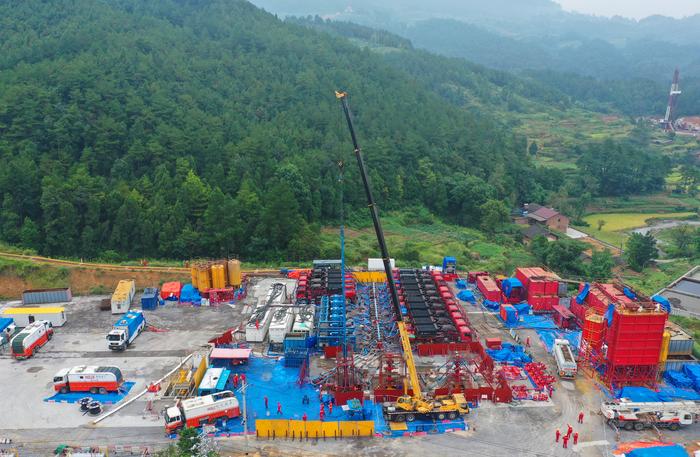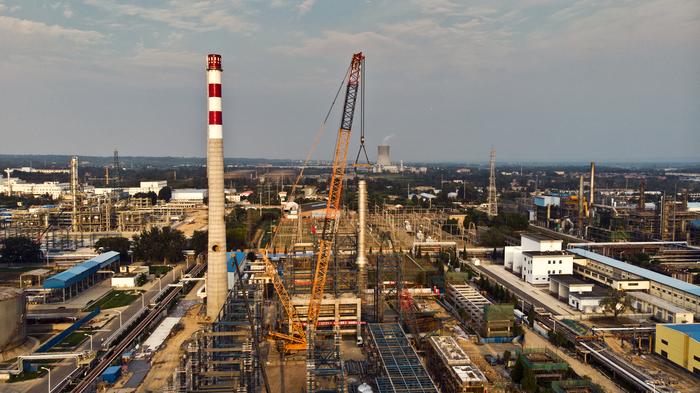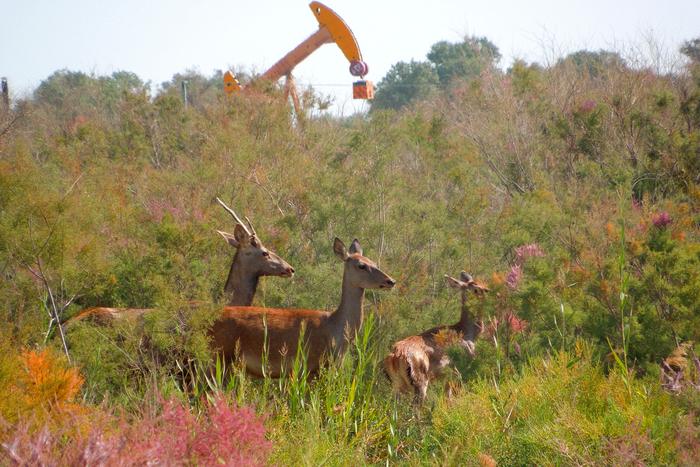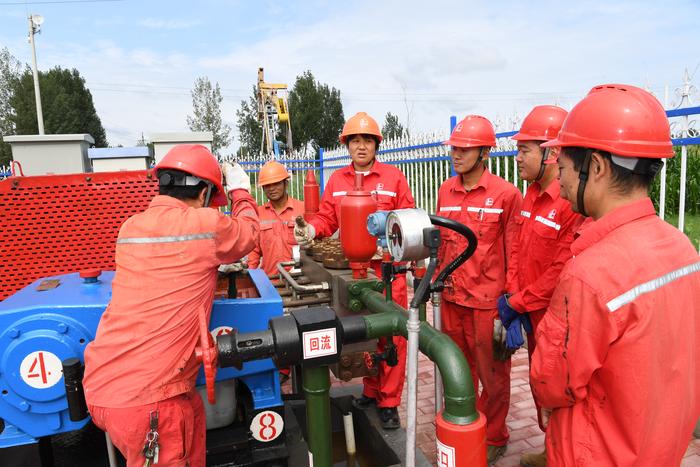|
| 2019-08-30 来源: 中国石化新闻网 |
| 石化新闻 |
|
中国石化新闻网讯 据今日油价8月28日报道,在阿拉斯经营运营了大约60年之后,BP正在撤离该市场。 BP宣布以56亿美元的价格将其在阿拉斯加的业务出售给Hilcorp能源公司。此次出售包括BP在普拉德霍湾油田的股份——普拉德霍湾油田是北美最大的油田,曾在上世纪80年代末,达到日产量150万桶的峰值。Hilcorp还将收购BP在Trans-Alaskan输油管道中的股份。 BP是油田开发和长距离管道开发的重要参与者,Trans-Alaskan管道将石油从阿拉斯加的北部输送到其南部海岸,然后出口到瓦尔迪兹港。BP首席执行官鲍勃·达德利表示,这次出售是逐步重塑BP的一部分,在美国和世界各地都有其他机会,这些机会与公司长期战略更加紧密地结合在一起,对公司投资更具竞争力。 前联邦和州官员、记者拉里·佩西莉对《华尔街日报 表示:“说心里话,这对阿拉斯加是个打击,BP及其前身公司在这里已经存在了几十年,阿拉斯加在全球石油领域的重要性显然不如过去。” 阿拉斯加的石油日产量从20世纪80年代末的200多万桶急剧下降到今天的不足50万桶。产量下降给管道系统带来了挑战。 对于BP来说,优先权正在转移到其他地方。值得注意的是,该公司去年以100亿美元从必和必拓手中收购了美国页岩油气资产。这家英国公司还誓言在2019年至2020年间剥离价值100亿美元的资产。在这种背景下,英国石油出售阿拉斯加可以被视为从成熟的常规钻探业务转向美国页岩油气的一个转折点。 Rystad Energy上游研究主管Espen Erlingsen在一份声明中表示:“我们认为,此举是BP战略转型的一部分,目的是进一步关注美国致密油资产,该公司去年从必和必拓手中收购了大量资产。” 正如彭博社的利亚姆•丹宁指出的那样,BP的出售是时代的标志。过去几年,在股东的压力下,大型石油公司一直在“从传统据点撤退”,在股东的压力下削减开支,避开破坏预算的大型项目。例如,几乎所有的石油巨头都已从加拿大的油砂开采中撤出,其中许多公司一直在撤出北海。 Espen Erlingsen表示:“BP在阿拉斯加的资产剥离符合近年来全球主要石油和天然气公司的发展趋势。最大的勘探和开发公司一直在稳步剥离成熟的晚期资产,以便为新地区的勘探和开发提供资金。” 伍德麦肯兹分析师Rowena Gunn表示:“各大石油公司的撤资行动正在取得进展。这将意味着长期持有的资产和领土将被出售,这不是该地区的最后一笔交易。埃克森美孚可能是继BP、阿纳达科石油公司、先锋石油公司和马拉松石油之后,又一家出售阿拉斯加资产的公司。” Hilcorp一直对自己的计划守口如瓶,但一些专家猜测,这笔交易可能导致一些短期失业,但也可能增加支出和其他活动。这笔交易立即使该公司成为阿拉斯加最大的生产商,约占该地区总产量的60%。据阿拉斯加公共媒体和Inside Climate News报道,Hilcorp在环境和安全方面的记录并不完善。 Enverus高级分析师Andrew Dittmar向彭博社表示:“Hilcorp在某种程度上是唯一遵循反周期策略的公司,真正追求的是上市公司以相当有吸引力的价格出售的这些遗留资产,这是一个冒险的赌注,一个不符合主流思路的赌注。” 但如今,许多大型石油公司大举押注美国页岩油气资源,这是也充满了风险。多年来,美国页岩油气行业一直在烧钱,独立的勘探开发公司今年也被华尔街狠狠地批了一顿,因为投资者对页岩资源带来巨额利润的承诺基本失去了信心。大型石油公司的表现要好一些,它们押注自己能够利用自己的规模,在规模较小的公司失败的地方取得成功。这将需要更多的时间来观察这个赌注是否成功。 洪伟立 摘译自 今日油价 原文如下: BP Exits Alaska To Double Down On Shale After roughly six decades in Alaska, BP is getting out. BP announced the sale of its Alaska operations to Hilcorp Energy Co. for $5.6 billion. The sale includes BP’s stake in the Prudhoe Bay oil field, the largest oil field in North America that once produced 1.5 million barrels per day at its peak in the late 1980s. Hilcorp will also acquire BP’s stake in the Trans-Alaskan Pipeline. BP was the central player in the development of both the oil field and the long-distance pipeline that moves oil from Alaska’s North Slope to its southern coast for export at the Port of Valdez. BP CEO Bob Dudley said the sale is part of “steadily reshaping BP and today we have other opportunities, both in the U.S. and around the world, that are more closely aligned with our long-term strategy and more competitive for our investment.” “Psychologically, it’s a hit to Alaska,” Larry Persily, a journalist and former federal and state official, told the Wall Street Journal. “BP and its predecessor companies have been here for decades, and Alaska clearly isn’t as important in global oil as it used to be.” Alaska’s production has declined steeply from over 2 million barrels per day in the late 1980s, to under 500,000 bpd today. Falling production creates challenges for the pipeline system. For BP, priorities are shifting elsewhere. Notably, it bought up U.S. shale assets from BHP Billiton last year for $10 billion, and the British company has also vowed to divest $10 billion worth of assets between 2019 and 2020. In that context, BP’s sale of Alaska can be viewed as a pivot from mature conventional drilling operations to U.S. shale. “We see this move as part of a strategic shift by BP to focus further on US tight oil assets, having acquired a large portfolio from BHP last year,” Espen Erlingsen, Rystad Energy’s head of upstream research, said in a statement. As Liam Denning notes in Bloomberg Opinion, BP’s sale is a sign of the times. Oil majors have been “retreating from traditional strongholds” in the last few years, pressured by shareholders to cut spending and steer clear of budget-busting megaprojects. Just about all of the majors have exited from Canada’s oil sands and many of them have been pulling out of the North Sea, for instance. Others agree. “BP’s divestitures in Alaska are in line with the trends seen globally among major oil and gas companies in recent years,” Espen Erlingsen of Rystad Energy said. “The largest E&P companies have been steadily divesting mature late-life assets in order to finance exploration and development in new regions.” “The Majors are making progress with their divestment campaigns. This will mean long-held assets and territories will be let go,” Rowena Gunn, an analyst at Wood Mackenzie, wrote. “This will not be the last deal in the region. ExxonMobil may be next to follow BP, Anadarko, Pioneer and Marathon in the list of companies having sold out of Alaska.” Hilcorp has kept its plans close to the vest, but some experts speculate that the deal could lead to some short-term job losses, but also a potential increase in spending and activity. The deal instantly makes the company the largest producer in Alaska at about 60 percent of total output. Hilcorp has a checkered environmental and safety record, according to Alaska Public Media and InsideClimate News. “Hilcorp is somewhat uniquely following a counter-cyclical strategy, really going after these legacy assets that public companies are selling at pretty attractive price points,” Andrew Dittmar, a senior analyst at Enverus, told Bloomberg. It’s a risky bet, and one that does not track with prevailing wisdom. But the strategy of so many large oil companies these days – betting heavily on U.S. shale – is also riddled with risk. The U.S. shale sector has been burning through cash for years, and independent E&Ps have been beaten down badly by Wall Street this year as investors have largely lost faith in the promises of huge profits from shale. The oil majors have held up better, and they are betting that they can use their size to succeed where smaller companies have failed. It will take some more time to see if that bet pans out.
|








